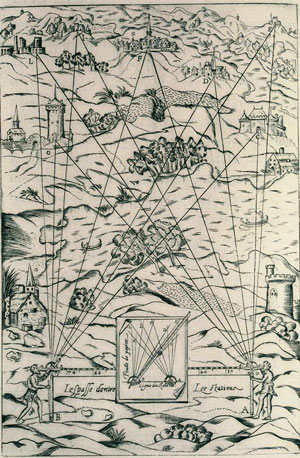By Fiona Fitzsimons

After the 1641 Rebellion, the Confederate Wars and the Cromwellian Conquest, the Commonwealth was obliged to redeem debts owed to soldiers and adventurers with land in Ireland seized from Catholic rebels. The Civil Survey (1654– 6) was the first step in discovering and describing the forfeited lands. Local commissioners were appointed to inquire into the extent and value of all property belonging to the State, the Church and any person whose lands were forfeit. They were to ascertain the quality, area and the boundaries; to record the buildings (castles, messuages etc.) and appurtenances (woods, quarries, mines, weirs etc.) on every premises; and to register any charge on the lands (leases, tithes or ‘any pious or charitable use’). They were further charged to visit each district and take the records of the original landowners, their deeds, rentals and surveys.
The commissioners empanelled local juries to give evidence of landholding, to define the boundaries of every parish and barony surveyed, and to give particulars for each townland, including:
- the names of the proprietors in 1640, their religion or ethnicity and their title to the lands: ‘in fee’—by descent, by letters patent or purchase; by lease or mortgage; most women who were proprietors held by right of dower (widow’s portion);
- the place-name(s) of all premises—to the genealogist this is especially useful where names are now obsolete;
- the estimated extent of the premises, set out as profitable and waste, given in the roundest of round figures;
- its annual valuation before the rebellion, ‘based on rents and improvements, buildings, mills, and market days’.
The evidence of the jurors was compiled into a book, with one or more books for each barony. A minimum of three commissioners endorsed each book to confirm that the proper process had been followed. A final fair copy with a seal attached was sent to the Surveyor-General, and a sealed duplicate copy to the Registrar for Forfeited Lands. The seal was important, because it meant that the evidence in each book had a legal standing.
Because of archival destruction, less than half of the original Civil Survey survives. We have incomplete evidence for most of ten counties—Derry, Donegal, Dublin, Kildare, Limerick, Meath, Tipperary, Tyrone, Waterford and Wexford—with some fragments for Carlow, Kilkenny City and Liberties, and the barony of Muskerry (Cork).
The Civil Survey has more complete, accurate evidence for landholding than any other contemporary source, including the later Down Survey. As a source for genealogical research it is especially useful for tracing Gaelic Irish and Old English families who were subsequently dispossessed. We find proprietors’ full legal names and place of residence on a given date. We sometimes see familial relationships defined, with years of marriage and/or death. We can use this evidence to piece together two or more generations of a family.
Although we don’t have all the commissions, what survives appears to be standardised. Even so, there’s considerable difference in the evidence returned by county. The inconsistency may be explained by the ghastly effect of more than a decade of war visited upon the Irish civilian population. The commissioners reporting from Dunkerran, Co. Kerry, wrote ‘of the said barony, all the inhabitants [are] dead, transported or transplanted’.
Fiona Fitzsimons is a director of Eneclann, a Trinity campus company, and of findmypast Ireland.
